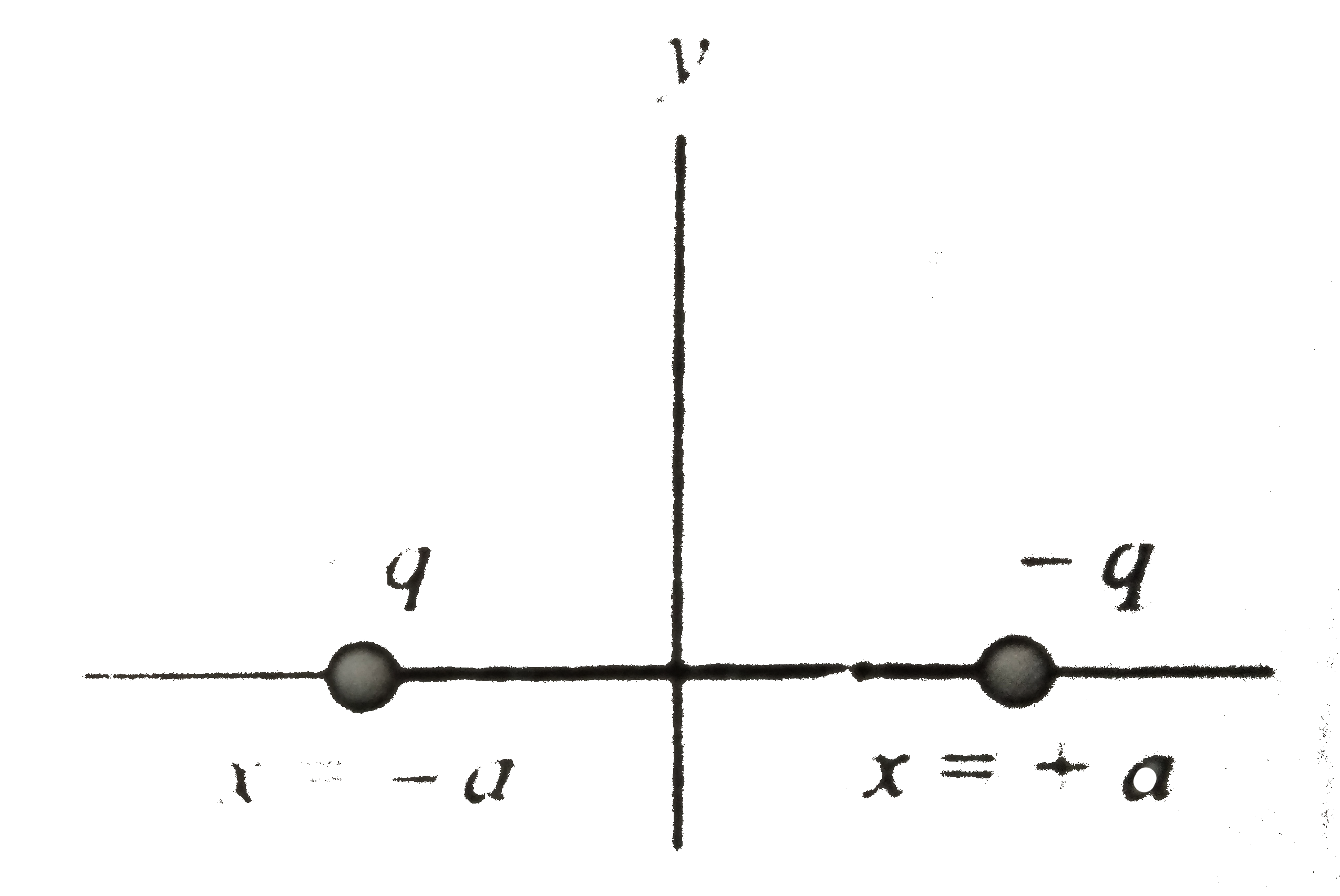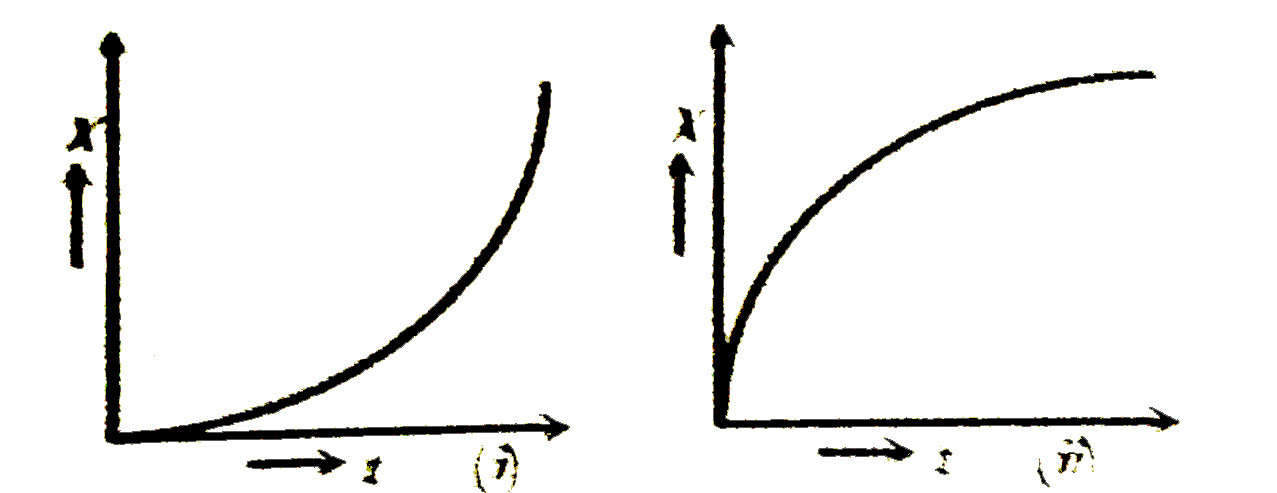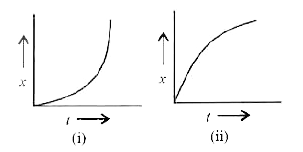Consider two identical charges placed a distance apart on the -axis.The equilibrium of a positive test charge placed at the point midway between them may be
(i) neutral
(ii) stable for displacement along the -axis
(iii) stable for displacement along the -axis
(iv) unstable for displacement along the -axis
stable for displacements along the x-axis
neutral
unstable for displacement along the y-axis.
stable for displacements along the y-axis
The correct Answer is:A, C
a.,c.
If positive test charge is displaced along exis, then net force will always act in a direction opposite to that of displacement and the test charge will always come back to its original position. But if test charge is displaced along exis, if will never come back to its original position and will fly away along axis.
Topper's Solved these Questions
- BOOK - CENGAGE PHYSICSCHAPTER - MISCELLANEOUS VOLUME 3EXERCISE - Assertion and Reason Type8videos
MISCELLANEOUS VOLUME 3
- BOOK - CENGAGE PHYSICSCHAPTER - MISCELLANEOUS VOLUME 3EXERCISE - Comprehension Type94videos
MISCELLANEOUS VOLUME 3
- BOOK - CENGAGE PHYSICSCHAPTER - MISCELLANEOUS VOLUME 3EXERCISE - True and False3videos
MISCELLANEOUS VOLUME 3
- BOOK - CENGAGE PHYSICSCHAPTER - MECHANICAL PROPERTIES OF SOLIDSEXERCISE - Question Bank4videos
MECHANICAL PROPERTIES OF SOLIDS
- BOOK - CENGAGE PHYSICSCHAPTER - MISCELLANEOUS VOLUME 5EXERCISE - Integer12videos
MISCELLANEOUS VOLUME 5
Similar Questions
Two equal positive point charges 'Q' are fixed at points B (a, 0) and A(-a, 0). Another test charge q0 is also placed at O (0, 0). Show that the equilibrium at 'O' is
(i) Stable for displacement along X-axis
(ii) Unstable for displacement along Y-axis.View SolutionTwo point charge ±q are placed on the axis at x=−a and x=±a, as shown in fig.
(i) Plot the variation of E along the x-axis.
(ii) Plot the variation of E along the y-axis.
 View Solution
View Solution
Knowledge Check
- Question 1 - Select One
The graph between the object distance along the X-axis and image distance along Y-axis for a convex lens is
Aa straight lineBa parabolaCa circleDa rectangular hyperbola - Question 2 - Select One
Figures (i) and (ii) below show the displacement-time graphs of two particles moving along the x -axis. We can say that
 ABoth the particles are having a uniformly accelerated motionBBoth the particles are having a uniformly retarded motionCParticle (i) is having a uniformly accelerated motion while particle (ii) is having a uniformly retarded motionDParticle (i) is having a uniformly retarded motion while particle (ii) is having a uniformly accelerated motion
ABoth the particles are having a uniformly accelerated motionBBoth the particles are having a uniformly retarded motionCParticle (i) is having a uniformly accelerated motion while particle (ii) is having a uniformly retarded motionDParticle (i) is having a uniformly retarded motion while particle (ii) is having a uniformly accelerated motion - Question 3 - Select One
Two equal charges q are kept fixed at −aand+a along the x-axis. A particle of mass m and charge q2 is brought to the origin and given a small displacement along the x-axis, then
Athe particle executes oscillatory motionBthe particle remains stationaryCthe particle executes SHM along x-axisDthe particle executes SHM along y-axis
Two equal charges q are kept fixed at a and +a along the x-axis. A particle of mass m and charge q2 is brought to the origin and given a small displacement along the x-axis then
View SolutionTwo equal point charges are fixed at x=−a and x=+a on the x-axis. Another point charge Q is placed at the origin. The change in the electrical potential energy of Q, when it is displaced by a small distance x along the x-axis, is approximately proportional to
View SolutionTwo charges, each equal to q, are kept at x=−a and x=a on the x-axis. A particle of mass m and charge q0=q2 is placed at the origin. If charge q0 is given a small displacement (y<<a) along the y-axis, the net force acting on the particle is proportional to
View SolutionFigure (i) and (i) show the displacement-time graphs of two particles moving along the x-axis. We can say that
 View Solution
View SolutionThe displacement of a body along the x-axis depends on time as √x=t+2, then the velocity of body
View Solution

